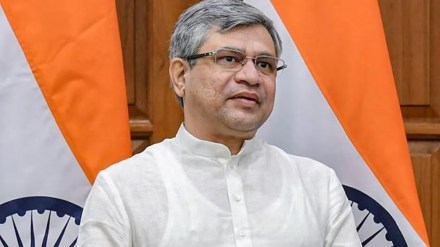Electronics and information technology minister, Ashwini Vaishnaw on Tuesday described India as a lighthouse of stability and growth at a time when the world grapples with uncertainty, and urged global industry leaders to invest in the country’s burgeoning semiconductor ecosystem. Speaking at the Semicon India 2025 conference, he said India’s stable policy framework, strong demand and expanding talent base make it one of the most promising investment destinations today.
“In these turbulent, uncertain times, India stands as a beacon of light. You should come to India for its stable policy, because the country’s demand is strong — demand for semiconductors is increasing every quarter. This is the time for you to be in India,” Vaishnaw said, drawing attention to the opportunities in the sector.
The minister underlined how India has moved from vision to execution in a remarkably short period since the launch of the India Semiconductor Mission just three and a half years ago. “In that span, we have the world looking at India with confidence. Today, the construction of five semiconductor units is going on at a rapid pace. The pilot line of one unit is complete and two more units will start production in a few months,” he added.
First indigenous chip presented to PM Modi
In a symbolic milestone, Vaishnaw also presented Prime Minister Narendra Modi with the first “made in India” chip. The Vikram 32-bit processor, along with test chips from four approved projects, marks a defining step in the nation’s semiconductor journey. Developed by Isro’s Semiconductor Lab, Vikram is India’s first fully indigenous microprocessor qualified for use in the harsh conditions of launch vehicles.
The presentation to the Prime Minister was accompanied by another achievement — seventeen student teams have successfully designed and taped out chips, reflecting the growing strength of India’s research and innovation ecosystem. Over 278 universities have now been equipped with advanced electronic design automation tools, giving 60,000 students exposure to over 13 million hours of practical design work.
Electronics production sees sharp growth
Vaishnaw highlighted the broader momentum in electronics, noting that production has grown six-fold and exports eight-fold in the past decade. With the Make in India initiative driving new plants across sectors, he said the semiconductor industry now has the chance to ride this wave of growth. He pointed to India’s vibrant startup ecosystem in chip design, which is increasingly producing intellectual property embedded in products by leading global manufacturers.
“Industry leaders, you should also come to India because we are now on a path to becoming a product nation. Our design capabilities, our deep and expanding talent pool, and the manufacturing facilities being developed will give you a unique advantage. You will grow with India’s growth,” the minister said.
